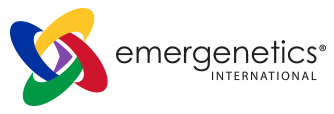
Company culture, employee engagement and productivity are all threads of the same tapestry. When they’re woven together with intentionality, they add vibrancy to your business.
Employees who feel connected to their organizational climate are four times more likely to be engaged. Over a three-year period, a strong culture can even improve staff satisfaction by 50%.
These common fibers create more than just a pretty picture. They also deliver practical benefits. A motivated workforce energizes the workplace and leads to 21% greater profitability. 76% of personnel also report that their corporate environment significantly impacts their productivity and efficiency.
Human Resources (HR) professionals have a significant opportunity to shape their climate in a way that boosts engagement and performance. It starts by recognizing that a one-size-fits-all approach is unlikely to yield the desired results.
7 Tips to Personalize Your Culture
Our research at Emergenetics International has shown that at least 85% of the world will think differently from you. For a lucky few, it’s actually 99%! That means the things that are likely to motivate me may be quite different from the ones that inspire you.
To ensure that you are cultivating an environment where all staff members can thrive, HR leaders can consider the Thinking and Behavioral preferences of their people and thoughtfully intertwine those needs into their initiatives. To begin:
 Empower Through Purpose
Empower Through Purpose
Your staff, especially those with an Analytical preference, will be more driven and prolific when they understand the “why” that’s driving your organization. Clear communication about the company’s objectives and outcomes – and how each person’s expertise contributes to achieving those goals – creates a sense of purpose. This intentional messaging helps employees feel focused and engaged in their work, generating better results.
 Promote Accountability
Promote Accountability
The way work gets done is just as important as the goals you aim to achieve. To promote a positive culture, prioritize accountability by establishing clear guidelines and working norms. Personnel who prefer Structural Thinking are motivated by the “how.” They appreciate precise instructions and expectations. Integrating follow-through mechanisms and clear processes ensures that everyone knows their role and can successfully complete their tasks.
Demonstrate Care
Burnout erodes culture, leading to disengagement and significant productivity losses. Energize employees with a Social preference by focusing on “who” the initiatives impact and investing in solutions that support their well-being. Use your policies and programs to address the social, emotional and mental wellness of your personnel. Doing so will stimulate a healthy environment where team members feel seen, appreciated and committed.
 Embrace Experimentation
Embrace Experimentation
Innovation not only inspires staff driven by new possibilities, such as those who prefer Conceptual thought. It also elevates performance. Build a climate that invites creative processes across the business. HR teams can help leaders establish a workplace where taking reasonable risks is celebrated and learning from mistakes is normalized. This approach fosters a growth mindset and drives continuous improvement.
 Invite Employee Voice
Invite Employee Voice
Workers are more motivated when they know that their voices and experiences matter. However, staff may have very different preferences for how they like to communicate. Some, especially those in the first-third of Expressiveness, may prefer to process information internally, while others, like those in the third-third, tend to appreciate external methods. Be thoughtful in soliciting input through multiple channels and proactively report on findings to ensure that every person feels heard and valued.
![]()
Moderate the Pace
Change fatigue is a real challenge in today’s rapidly evolving world. Organizations need to balance the necessity to keep pace with industry changes and the need to give staff time to breathe. HR teams can be mindful of how they structure work to allow for both pushes and pauses. The balance helps maintain workflow and prevent burnout while engaging the different levels of Assertiveness that exist within your organization.
 Establish Loose and Tight Rules
Establish Loose and Tight Rules
Speaking of change fatigue, some of your team members, particularly those in the third-third of Flexibility, will be energized by transformation. Others, such as those in the first-third, will feel more engaged when they are able to stick to the current plan. Honor both styles by carefully defining the loose and tight elements of your culture. The things you consider as “tight” are the non-negotiables of your business, like company values or norms. The aspects you are “loose” about are open to individual interpretation and action. Defining these expectations allows employees to get a clear picture of what they need to commit to and where they have the freedom to iterate.
7 Actions to Transform Your Climate
As you evaluate opportunities to weave these Thinking and Behavioral styles into your environment, consider the following actions:
- Communicate Purpose: Regularly share the company’s objectives and make connections between initiatives to priority outcomes.
- Establish Clear Processes: Create detailed guidelines and expectations when it comes to performance and advancement.
- Invest in Well-being: Implement wellness programs that address social, emotional, financial, physical and mental health.
- Encourage Innovation: Find opportunities to protect employees’ time so they can be creative and have the latitude to try new things.
- Solicit Feedback: Regularly gather staff input and act on it, ensuring distinct communication preferences are respected.
- Balance Work Pace: Structure work in a way that recognizes high-intensity periods need to be followed by downtime.
- Define Loose and Tight Rules: Delineate non-negotiable aspects of your climate and areas where personnel can adjust their approach as they go.
Implementing these strategies will help you build an environment that honors the distinct ways your people prefer to think and behave. Each step you take towards understanding and supporting your team members’ varied preferences will contribute to a thriving organizational culture, where the workforce feels engaged and motivated to perform.
Curious to learn more about how you can boost employee engagement in your workplace? Click here to watch our webinar, 3 Essential Drivers of Employee Engagement.
 Print This Post
Print This Post
